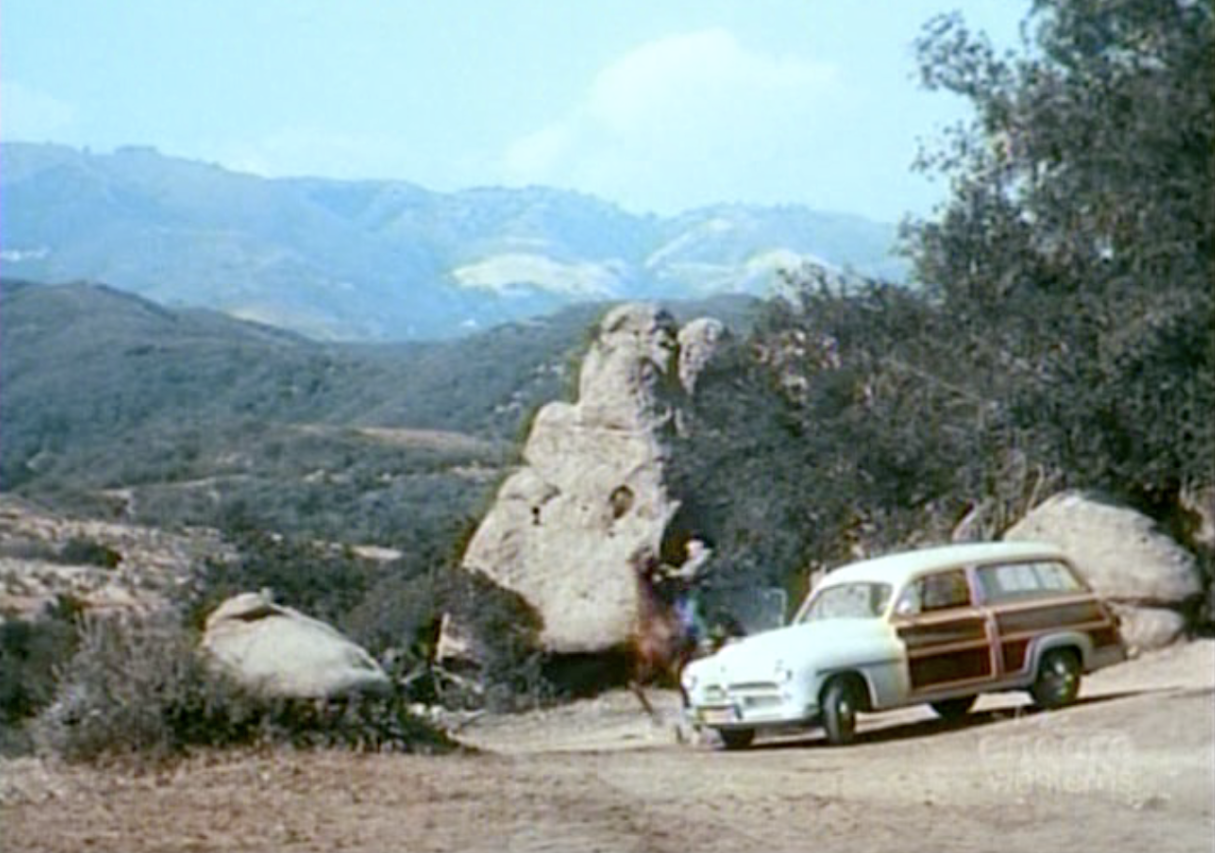"The Golden Stallion" (1949): Scene filmed in what is now a cul de sac
The above shot is taken from the Roy Rogers movie "The Golden Stallion," in which the plot revolves around Roy's beloved horse Trigger being accused of killing a guy.
Along with a really sweet woodie, the shot showcases the Cul de Sac Crew, a rock feature on the former Upper Iverson Movie Ranch in Chatsworth, Calif. The tall triangular rock noted here is the feature's defining "character."
"The Adventures of Kit Carson": episode "The Baron of Black Springs"
This shot comes from the TV show "
The Adventures of Kit Carson
," which aired from 1951-1955. The shot isn't the greatest picture quality, but the photo shows more of the Cul de Sac Crew, at top right. The episode "The Baron of Black Springs" premiered Aug. 9, 1952, early in the second season of "Kit Carson."
Here's a look at the Cul de Sac Crew today, taken from about the same angle, from the middle of the cul de sac.
These days the rock feature is situated at the end of a cul de sac — hence the name. It currently "lives" among the large estates that occupy most of what
was once the Upper Iverson.
Another view of the Cul de Sac Crew in recent times. That's poison oak at its most virulent in the bottom left corner, with some of the leaves having turned red.
The Cul de Sac Crew, circa the 1930s
We get a good look at the Cul de Sac Crew in an old photo believed to be from the 1930s, around when the Iverson family purchased what would become the Upper Iverson.
This post is part of a series on "Classic Rocks" — sandstone giants
located on the former Iverson Movie Ranch in Chatsworth, Calif., that became a part of not only America's physical landscape but also its cultural heritage, through
featured roles in old movies, cliffhanger serials and early TV shows. Other entries in the series can be seen by
clicking here.
























-Adventures%2Bof%2BKit%2BCarson%2B1.23-Oat%2BMountain%2C%2Betc.-noted.png)

















